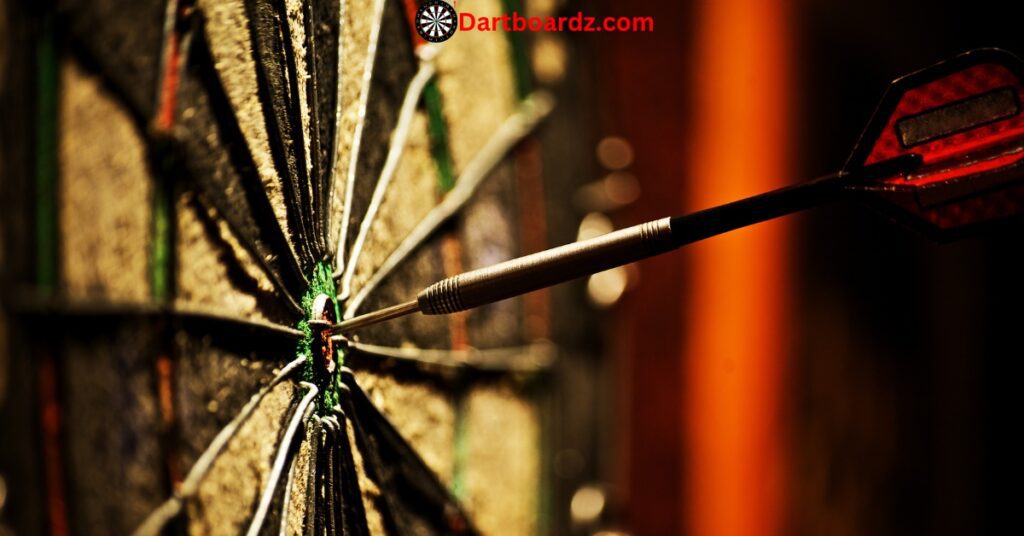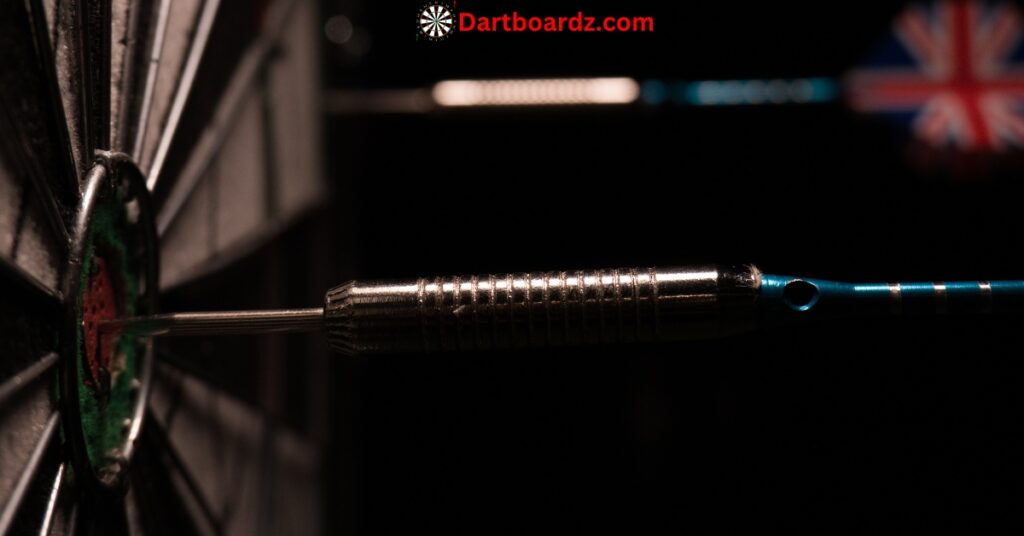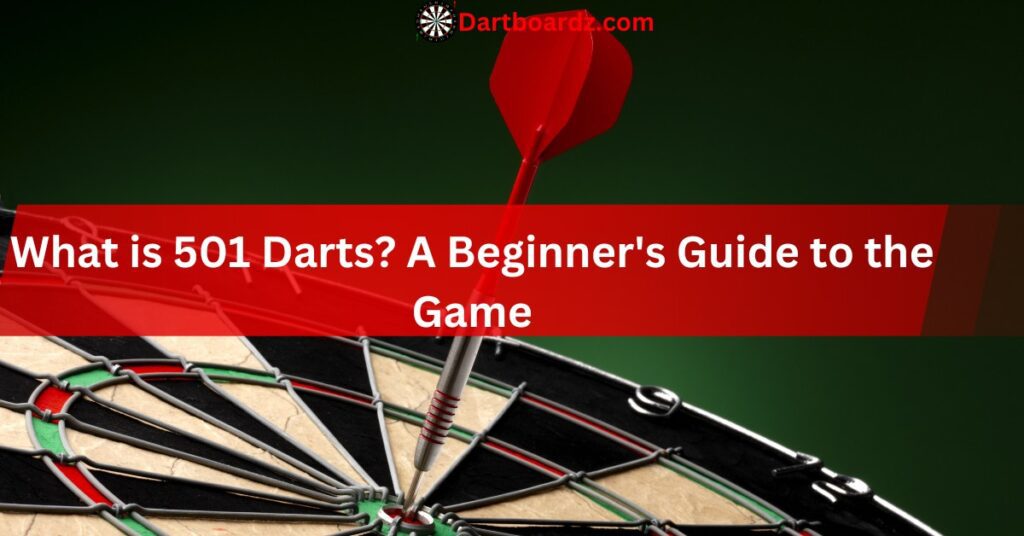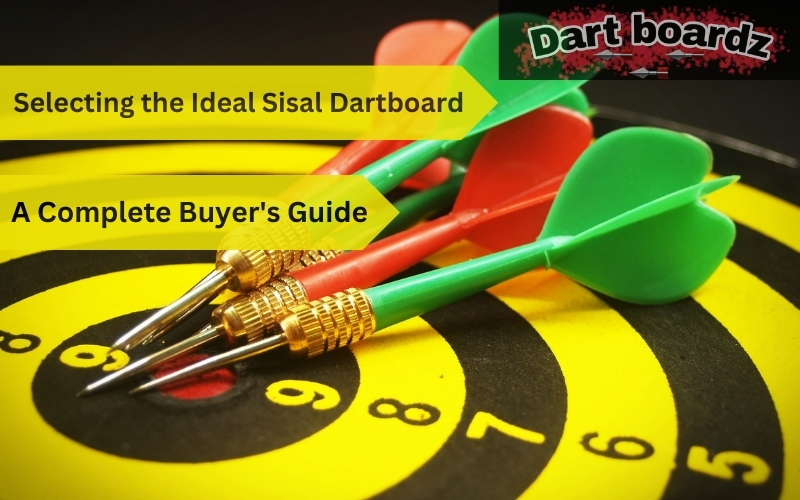The allure of darts lies in its simplicity. A dartboard a few darts and a dash of friendly competition that’s all you need to get started. But within this seemingly straightforward game lies a surprising depth of strategy and skill.
501 the most popular darts format is the perfect entry point for beginners offering a clear objective and a foundation for mastering the art of throwing.
What is 501 Darts?
As the name suggests 501 darts is a game where players start with a score of 501 and aim to reduce it to zero first. Each turn players throw three darts at the dartboard subtracting their point value from their remaining score.
The first player to reach exactly zero wins the game but there’s a crucial twist: you can’t simply hit zero with any dart.
READ NEXT: How to Play Darts 501: A Step-by-Step Guide for Beginners?
The Art of Doubling In and Doubling Out
To introduce an element of strategy and prevent quick wins 501 darts incorporates the concept of “doubling in” and “doubling out.” Doubling in refers to the requirement that your first scoring throw must land on a double ring segment of the board.
This adds a layer of difficulty right from the start forcing players to aim for higher point values (think double 20 worth 60 points) rather than settling for bullseyes (50 points).
Doubling out follows the same principle but with an even stricter rule. To win the game your final dart must land on a double ring segment that brings your score down to exactly zero. This adds a thrilling layer of pressure and requires careful calculation in the later stages of the game.

The All-Important Dartboard
The dartboard is your battlefield in 501 darts. Understanding its layout and scoring zones is essential. Here’s a breakdown of the key areas:
- Bullseye: The center most red circle worth 50 points.
- Outer Bull: The green ring surrounding the bullseye worth 25 points.
- Numbered Segments: The board is divided into 20 numbered segments each with a point value corresponding to its number (1-20).
- Double Ring: The outer ring around each numbered segment doubling the point value of the number it surrounds (e.g. double 20 is worth 60 points).
- Triple Ring: The inner ring around each numbered segment tripling the point value of the number it surrounds (e.g. triple 20 is worth 60 points).
Understanding these zones will help you visualize your throws and strategize for optimal scoring.
Mastering the Game – Scoring Techniques Tips & Etiquette
Now that you’re familiar with the core mechanics of 501 darts let’s explore some essential elements to elevate your game play.

Scoring Techniques: Maximizing Your Points
While the basic premise of hitting high-scoring segments seems straightforward there are some clever tactics to maximize your points per throw:
Aiming for Trebles
While doubles are crucial for finishing the game don’t neglect the triple ring. Early on aiming for triples like triple 20 (60 points) or triple 19 (57 points) can significantly chip away at your score.
Shanghai for Big Finishes
If you’re left with a score divisible by 3 (like 141 or 99) consider aiming for the treble 20 followed by a single bullseye (50 points). This combination nicknamed “Shanghai” brings you down to exactly zero in two throws.
Remember: Don’t be afraid to experiment with different aiming points based on your remaining score. There’s no one-size-fits-all strategy and adapting to the situation is key.

Essential Tips for Beginners: Sharpen Your Skills
Here are some golden rules to remember as you embark on your 501 darts journey:
Master Your Grip: A comfortable and consistent grip is vital for accuracy. Experiment with different hand positions until you find one that feels natural and allows for controlled throws.
Focus on Form: Maintain good posture with your feet shoulder-width apart and a balanced stance. Aim with your dominant eye and ensure a smooth throwing motion.
Start Close: Don’t overwhelm yourself by starting too far from the oche (the throwing line). Begin by practicing at a comfortable distance and gradually increase it as your confidence grows.
Practice Makes Perfect: As with any skill consistent practice is key to improvement. Dedicate time to throwing regularly even if it’s just for short sessions.
Remember: Patience is crucial. Don’t get discouraged if you don’t see immediate results. With dedication and practice you’ll be hitting those high scores in no time!
The Unspoken Rules of Darts Etiquette: Be a Good Sport
While 501 darts is a competitive game maintaining good sportsmanship goes a long way. Here are some etiquette pointers to ensure a fun and respectful experience for everyone involved:
Call Your Shots: Before throwing announce where you’re aiming (e.g. “double 20”). This helps avoid confusion and potential arguments.
Respect the Oche: Don’t cross the throwing line until your opponent has retrieved their darts. This ensures safety and fair play.
Celebrate Wins Gracefully: A friendly fist pump or a celebratory word is fine but avoid excessive gloating or disrespectful behavior.
Be a Good Loser: Losing is part of the game. Shake your opponent’s hand congratulate them on the win and be ready for the next round.
By following these simple guidelines you’ll contribute to a positive and enjoyable atmosphere for everyone at the dartboard.
Ready to Throw?
With the knowledge you’ve gained from this guide you’re well-equipped to step up to the oche and take your first shot at 501 darts. Remember practice is key and don’t be afraid to have fun! So grab some darts find a friend (or a friendly pub!) and get ready to experience the thrill of this classic game.
FAQs:
What darts are best for beginners?
For beginners prioritize steel-tipped darts with a weight that feels comfortable in your hand. Start with a mid-range weight (around 18-22 grams) and experiment to find your preference.
How far should I stand from the oche (throwing line)?
The standard distance from the oche is 2.37 meters (7 feet 9 ¼ inches). This is a good starting point but feel free to adjust slightly based on your height and throwing comfort.
What if I accidentally hit the doubles ring before doubling in?
Unfortunately that throw doesn’t count towards your score. Remember your first scoring throw must land on a double. Retrieve your dart and try again!
Is it okay to move around the oche while throwing?
No it’s not. You must maintain one foot behind the oche line when throwing your darts. Stepping over the line before releasing your dart results in a “foul” throw that doesn’t count.
How can I improve my accuracy?
Consistent practice is key. Focus on maintaining a consistent grip stance and throwing motion. 501 darts Aiming at specific targets on the board and grouping your darts close together helps improve accuracy over time.




